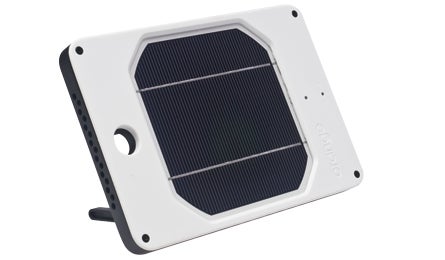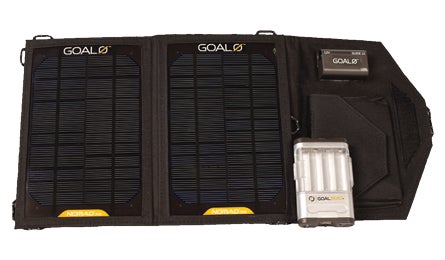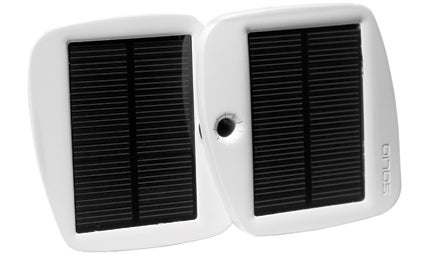Three Backpacker-friendly Solar Chargers
These compact, hyper-efficient solar chargers will power your gadgets no matter where you travel.

JOOS Orange (Courtesy Photo)

Goal Zero Guide 10 Plus Adventure Kit (Courtesy Photo)

Solio Bolt (Courtesy Photo)
[most powerful]
JOOS Orange
High-grade mono-crystalline solar cells make the Orange up to 20 times more powerful than other chargers tested: We simultaneously charged the internal battery and an iPhone while using juice-Hoovering Skype on a sun-blasted Colorado trail. It even squeezed enough power out of a drizzly Olympic National Park day to recharge a smartphone overnight. A waterproof polycarbonate shell absorbs kicks, dust, and dunks. Tradeoff: It’s heavy and tough to lash to a pack. $149; 1 lb. 8 oz.; solarjoos.com
[fastest]
Goal Zero Guide 10 Plus Adventure Kit
On a bluebird day, the Goal Zero’s dual postcard-size monocrystalline panels fully charged its battery pack in about two hours. The pack holds four removable, rechargeable AA or AAA batteries for use with non-USB gadgets. A lightweight nylon mesh skin has cord loops that make it easy to connect to packs, tents, and trees. However, low-light performance suffers: Scattered clouds slowed charging time; thick cloud cover stopped it dead. $160; 12.8 oz.; goalzero.com
[lightest]
Solio Bolt
This R2D2-cute charger is a lightweight, easy-to- pack insurance policy: “When I lost my way in deep snow, the sun was going down, my topo was smeared, and my phone was dead,” says a Cascades tester. “I set the Bolt out for an hour and got enough juice to power up a GPS app and find my way out.” Caveat: The Bolt’s lower grade (and cheaper) polycrystalline cells need direct sun, and minor obstructions (like pack straps) can halt charging. $60; 5.3 oz.; solio.com
